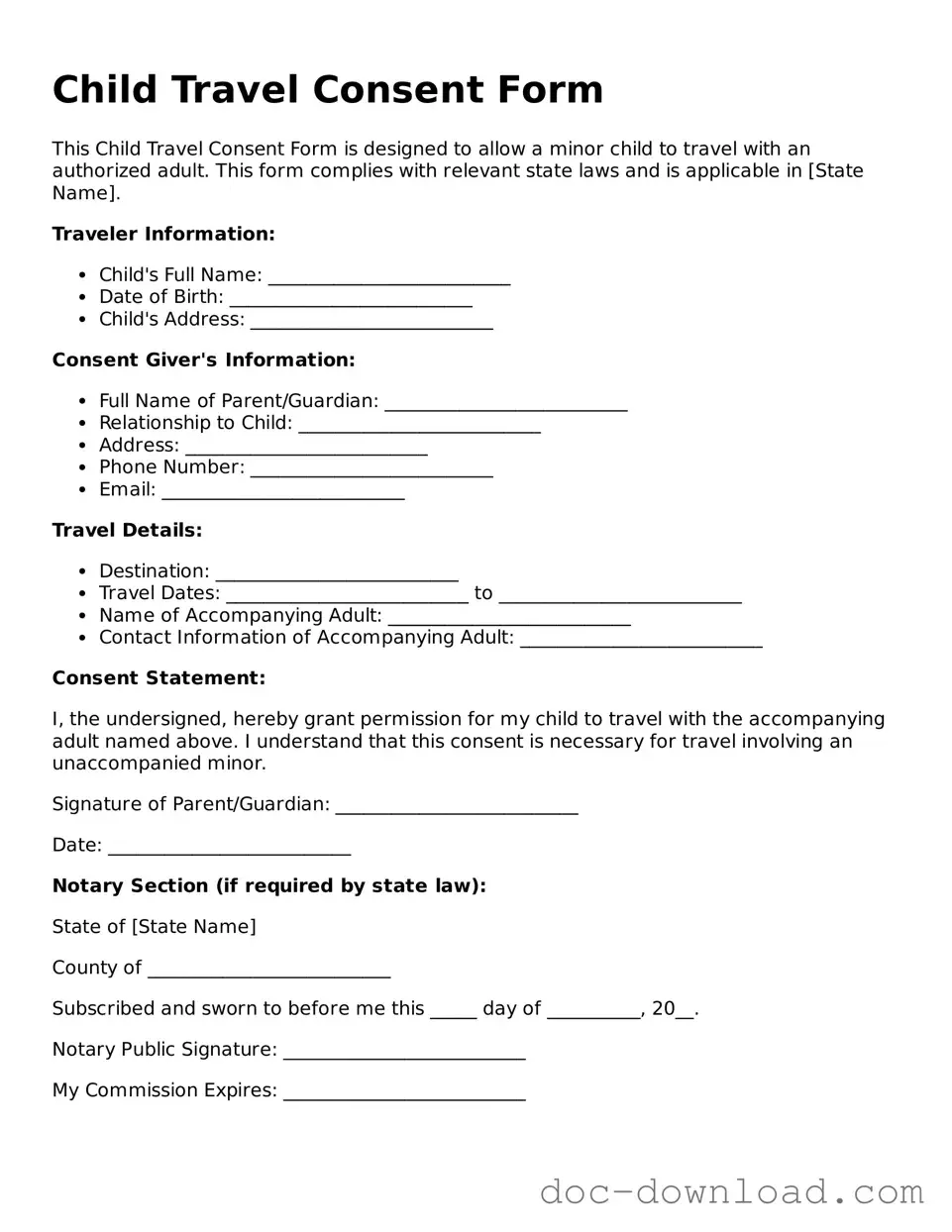The Child Travel Consent Form is similar to a Power of Attorney document, which grants someone the authority to make decisions on behalf of another person. In the context of travel, a parent or guardian may use a Power of Attorney to allow another adult to take their child on a trip. This document ensures that the designated adult can make necessary decisions regarding the child’s welfare during the travel period, similar to how a travel consent form allows for the child to travel with someone other than their parent or guardian.
Another document that bears resemblance is the Medical Consent Form. This form is often used when a child is in the care of someone else, allowing that person to make medical decisions in case of an emergency. Like the Child Travel Consent Form, it serves to protect the child’s well-being by ensuring that necessary actions can be taken without delay, especially when parents or guardians are not present.
The Authorization for Minor to Travel document also shares similarities with the Child Travel Consent Form. This document specifically authorizes a minor to travel, often internationally, with specified adults. It provides details about the trip, including dates and destinations, thereby ensuring that authorities recognize the travel as legitimate and approved by the child’s legal guardians.
Parental Consent for Travel is another document that functions similarly. This form is typically used when a child is traveling alone or with someone who is not their parent. It outlines the parents’ permission for the child to travel and may include travel itineraries and contact information for the parents, ensuring that the child’s travel is sanctioned and monitored.
The Child Custody Agreement can also be compared to the Child Travel Consent Form. In cases of divorce or separation, this agreement outlines the rights and responsibilities of each parent regarding the child. When travel is involved, the agreement may specify how travel consent is to be handled, ensuring that both parents are aware of and agree to the child’s travel plans.
The Travel Insurance Policy can be seen as similar in that it provides protection during travel. While it does not grant permission, it ensures that a child is covered for any unforeseen incidents during their journey. Parents often seek travel insurance when sending their child away, similar to how they would seek a consent form to ensure safe travel.
Another relevant document is the International Child Abduction Prevention document. This form aims to prevent international child abduction by requiring consent from both parents for a child to travel abroad. Like the Child Travel Consent Form, it emphasizes the need for parental agreement and awareness regarding a child’s travel, especially across borders.
The Release of Liability Waiver is also akin to the Child Travel Consent Form. This document is often used by organizations or groups that take children on trips, releasing them from liability in case of accidents or injuries. While it does not authorize travel, it complements the consent form by ensuring that parents are aware of the risks involved and have given their permission for the child to participate in travel activities.
Finally, the School Field Trip Permission Slip is similar in its purpose of granting consent for a child to travel under specific circumstances. This slip is used by schools to obtain parental permission for students to participate in field trips. Like the Child Travel Consent Form, it serves to ensure that parents are informed and have consented to their child’s travel, albeit in a more localized context.
